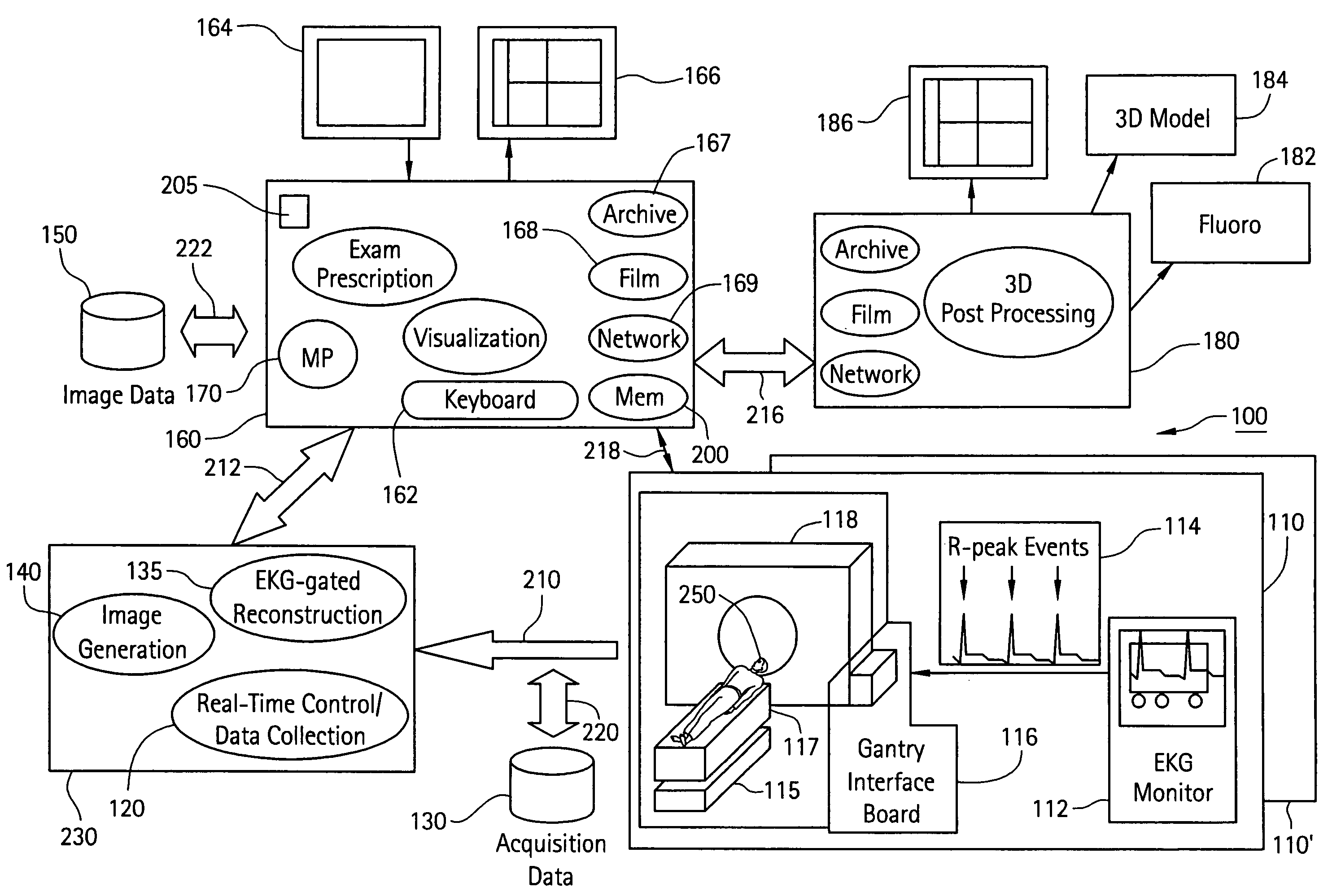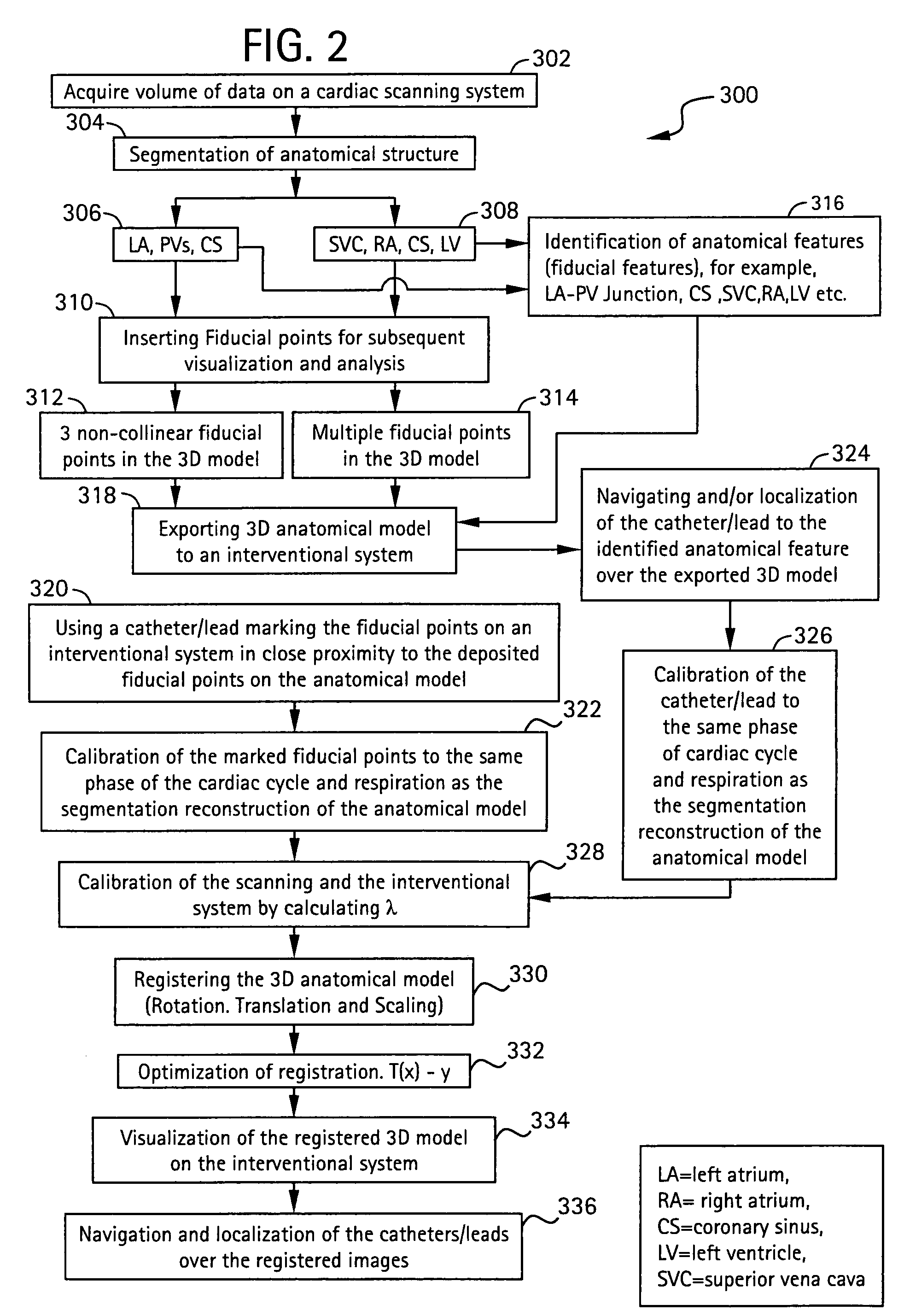Method and system for registration of 3D images within an interventional system
a technology of interventional system and 3d image, applied in image analysis, medical science, image enhancement, etc., can solve the problems of high incidence of af patients with such complications, difficulty in keeping the mapping and ablation catheter stable, congestive heart failure, etc., and achieve the effect of reducing motion artifacts
- Summary
- Abstract
- Description
- Claims
- Application Information
AI Technical Summary
Benefits of technology
Problems solved by technology
Method used
Image
Examples
Embodiment Construction
[0033] Disclosed herein is a method and system for registration of anatomical images within an interventional system, in which imported, segmented images (in the form of a 3D model) are registered with an interventional system through the use of deposited fiducial points on the 3D model and / or the navigation and localization of an instrument (e.g., catheter, pacing lead) with respect to one or more identified anatomical features (e.g., the left atrium / pulmonary vein junction of the heart, the coronary sinus, superior vena cava (SVC), etc.). Moreover, the present invention embodiments provide for improved reduction of motion artifacts due to cardiac and respiratory motion by image segmentation, fiducial point deposition and instrument location at about the same phase of the cardiac cycle for example about 75% of the R-R cycle during sinus rhythm, and about 45% to 50% of the R-R interval during atrial fibrillation which can cause fast and irregular R-R intervals. Although the exemplar...
PUM
 Login to View More
Login to View More Abstract
Description
Claims
Application Information
 Login to View More
Login to View More - R&D
- Intellectual Property
- Life Sciences
- Materials
- Tech Scout
- Unparalleled Data Quality
- Higher Quality Content
- 60% Fewer Hallucinations
Browse by: Latest US Patents, China's latest patents, Technical Efficacy Thesaurus, Application Domain, Technology Topic, Popular Technical Reports.
© 2025 PatSnap. All rights reserved.Legal|Privacy policy|Modern Slavery Act Transparency Statement|Sitemap|About US| Contact US: help@patsnap.com



